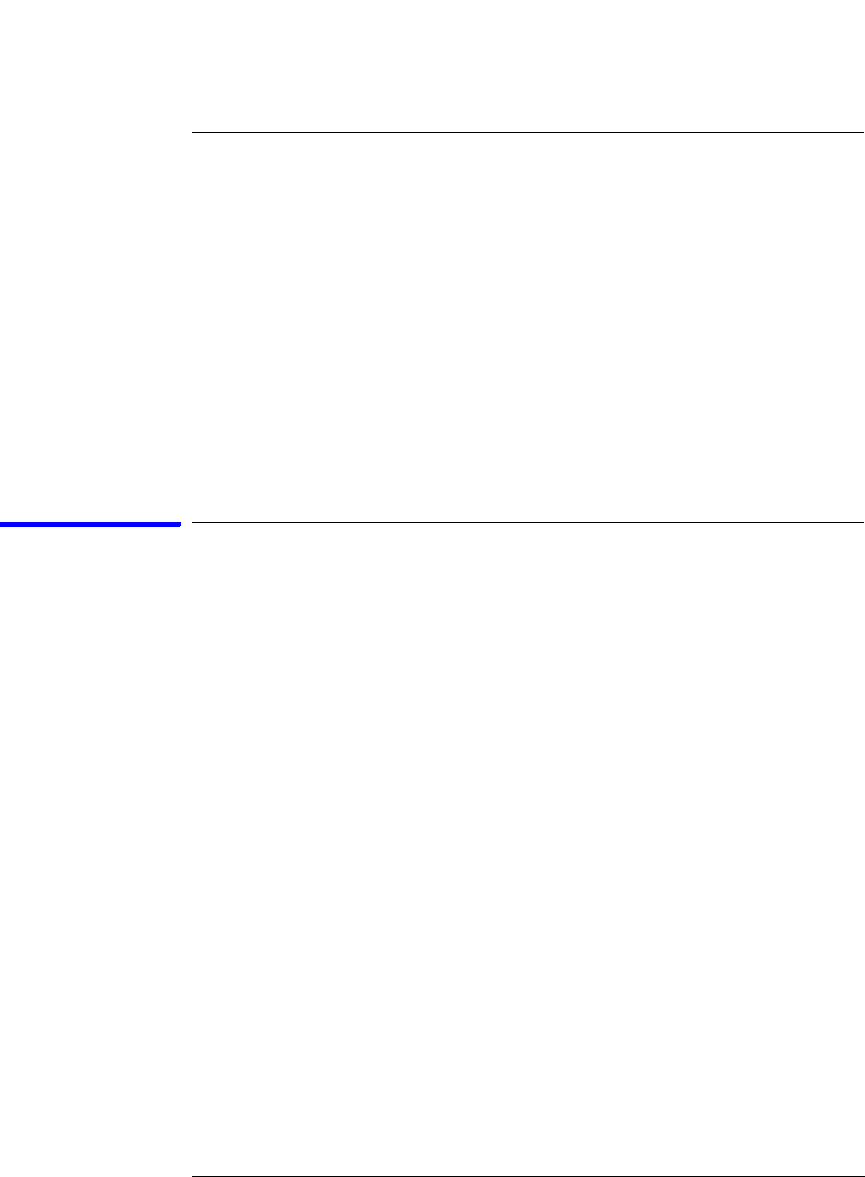User's Manual
Table Of Contents
- Agilent Technologies 16750A/B Logic Analyzer
- Agilent Technologies 16750A/B Logic Analyzer
- Contents
- Getting Started
- Step 1. Connect the logic analyzer to the device under test
- Step 2. Choose the sampling mode
- Step 3. Format labels for the probed signals
- Step 4. Define the trigger condition
- Step 5. Run the measurement
- Step 6. Display the captured data
- For More Information...
- Example: Timing measurement on counter board
- Example: State measurement on counter board
- Task Guide
- Probing the Device Under Test
- Choosing the Sampling Mode
- To select transitional timing or store qualified
- Formatting Labels for Logic Analyzer Probes
- Setting Up Triggers and Running Measurements
- Displaying Captured Data
- Using Symbols
- Printing/Exporting Captured Data
- Cross-Triggering
- Solving Logic Analysis Problems
- Saving and Loading Logic Analyzer Configurations
- Reference
- The Sampling Tab
- The Format Tab
- Importing Netlist and ASCII Files
- The Trigger Tab
- The Symbols Tab
- Error Messages
- Must assign Pod 1 on the master card to specify actions for flags
- Branch expression is too complex
- Cannot specify range on label with clock bits that span pod pairs
- Counter value checked as an event, but no increment action specified
- Goto action specifies an undefined level
- Maximum of 32 Channels Per Label
- Hardware Initialization Failed
- Must assign another pod pair to specify actions for flags
- No more Edge/Glitch resources available for this pod pair
- No more Pattern resources available for this pod pair
- No Trigger action found in the trace specification
- Slow or Missing Clock
- Timer value checked as an event, but no start action specified
- Trigger function initialization failure
- Trigger inhibited during timing prestore
- Trigger Specification is too complex
- Waiting for Trigger
- Analyzer armed from another module contains no "Arm in from IMB" event
- Specifications and Characteristics
- Concepts
- Understanding Logic Analyzer Triggering
- Understanding State Mode Sampling Positions
- Getting Started
- Glossary
- Index

106
Chapter 2: Task Guide
Cross-Triggering
Cross-Triggering
An instrument must be armed before it can look for a trigger. By
default, instruments are set to be armed immediately when you Run
the measurement.
However, you can set an analyzer instrument to be armed either by the
second analyzer within the same instrument (if it's turned on) or by
another instrument (in a different slot or frame).
• “To cross-trigger between two analyzers” on page 106
• “To cross-trigger with another instrument” on page 107
To cross-trigger between two analyzers
1. Make sure both analyzers are turned on. To turn on the second analyzer:
a. In the Format tab, select the Pod Assignment button.
b. In the Pod Assignment dialog, change the analyzer type from Off to
either State or Timing.
The system pauses while setting up the second analyzer. When it is
done, a setup window for the second analyzer appears.
In the analyzer waiting for the arm signal
1. In the Trigger tab's Trigger Sequence area, select the sequence level that
that should wait for the other analyzer's trigger.
2. In the Trigger Functions subtab, select the Wait for second analyzer to
trigger trigger function and select either the Replace or Insert before
button.
(You can also use an advanced trigger function, edit it, and insert an
Analyzer<2> triggers event.)
In the analyzer driving the arm signal
1. Set up the logic analyzer trigger as you would normally.










